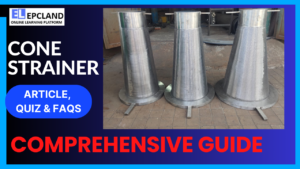Merox Process: Master These 10 Essential Concepts
Jet fuel powers the modern world, enabling global connectivity through air travel. But the fuel that lifts massive aircraft off the ground is far from simple; it undergoes sophisticated purification steps to ensure safety and performance. One of the most critical stages in jet fuel refinement is the Merox process. This complex chemical journey is essential for ‘sweetening’ the fuel, removing harmful sulfur compounds that can cause corrosion, odor, and operational issues in aircraft engines. Understanding the Merox process provides valuable insight into the hidden engineering vital to aviation.
Table of Contents
- Introduction
- The Quiz Section: Test Your Knowledge on Merox Process
- Major Takeaways
- Conclusion
🔷 Check the complete course on Piping Engineering
The Quiz Section: Test Your Knowledge on Merox Process
Question 1: What is the primary purpose of the caustic pre-wash stage in the Merox process?
Question 2: Which sulfur compounds are primarily targeted for conversion in the Merox reactor?
Question 3: What substance is fed into the Merox reactor along with mercaptans to facilitate the main sweetening reaction?
Question 4: What is the role of the alkaline bed of catalyst within the Merox reactor?
Question 5: Following the Merox reactor, what is the function of the caustic settler?
Question 6: Why is a water wash performed after the caustic settler?
Question 7: What is the primary function of the salt bed in the Merox process sequence?
Question 8: What type of impurity is the clay bed designed to remove as a final step?
Question 9: In the context of jet fuel, what does the term “sweetening” refer to?
Question 10: Why is the sweetening process for jet fuel, like the Merox process, critical for aviation?
📘 Explore all available courses on EPCLAND
Major Takeaways
- The Merox process is a jet fuel sweetening treatment that chemically purifies fuel by removing problematic sulfur compounds.
- Initially, a caustic pre-wash removes acidic components like hydrogen sulfide using sodium hydroxide.
- The core of the Merox process involves a reactor where mercaptans are converted into less harmful disulfides using oxygen and a catalyst.
- Settling and water washing stages follow to remove residual caustic solution from the fuel.
- A salt bed acts as a drying step, pulling out dissolved salts and water from the fuel stream.
- Finally, a clay bed provides a polishing step in the Merox process, absorbing trace impurities for the final clean product.
Conclusion
The journey from raw feed to aviation-ready fuel is intricate, with the Merox process standing out as a fundamental step. By systematically removing harmful sulfur compounds like hydrogen sulfide and mercaptans through stages of washing, reaction, settling, and drying, the Merox process transforms fuel into a clean, stable product. This complex but essential chemical engineering is a hidden guardian of air travel, ensuring the safety and efficiency of every flight we take. Mastering the concepts behind the Merox process reveals the depth of technical effort underpinning modern life.
📚 Check all Quiz Blogs with Video Explanations



